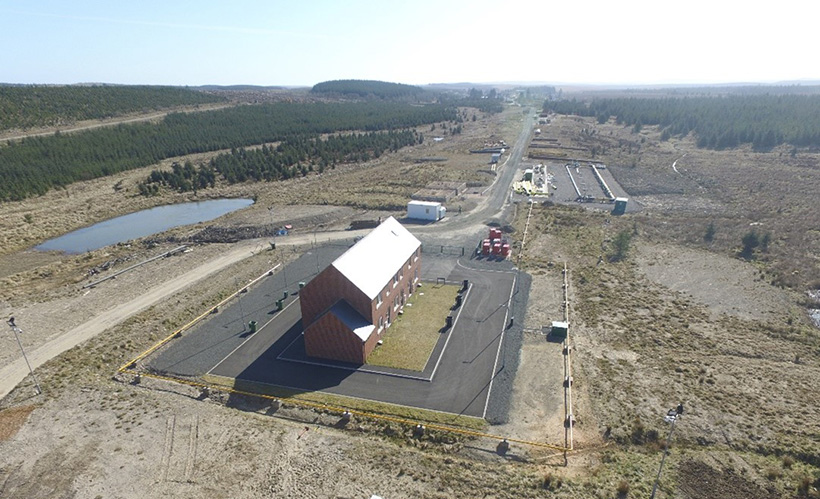Gemma Simpson
Gemma tells us more about LTS Futures during COP27.
To determine whether we can use the Grangemouth to Granton pipeline for hydrogen, we needed to carry out surveys and checks. First, we walked along the pipeline and surveyed it to find out how deep it is and to check the condition of the coating on the pipeline.
Then, we put something called pig traps at both ends of the pipeline. It's not what it sounds like! These traps allowed us to push a pipeline inspection gauge through the pipeline using compressed air, clearing debris and checking for any damage or dents.
Watch a pipeline inspection gauge being inserted into the Grangemouth to Granton pipeline.
Switching from natural gas to hydrogen will require some changes to the way Local Transmission System (LTS) pipelines are operated and managed.
Typical natural gas network activities such as live welding, under-pressure drilling and venting are incredibly important to maintain an uninterrupted supply to customers. Changes to the procedures for these operations is required because hydrogen has different properties than natural gas.
To find out what needs to be changed, we’re carrying out development and testing at The Welding Institute (TWI) in Cambridge and DNV GL’s Spadeadam test site.
We’re examining how hydrogen gas impacts pipeline materials, welds, and defects of various ages and conditions. By comparing tests in both inert and hydrogen environments, we can understand how hydrogen affects pipeline steel, which will help improve design and operations.
In a TWI lab in Cambridge, 700 tests are being carried out on three different LTS pipe samples. These tests are helping us understand how the older pipeline material is affected by exposure to hydrogen.
Meanwhile, at DNV's facility in Cumbria (pictured) we’re conducting the following full-scale testing to check how pipelines and fittings behave with 100% hydrogen.

Part of the hydrogen testing facility at DNV Spadeadam
Burst and fatigue testing involves adding defects into pipe sections and increasing the pressure until they fail. This helps us understand the safety margins and maintenance needs for LTS pipelines.
Vent and flaring tests check how noise and thermal behaviour change when venting hydrogen compared to natural gas.
Performance testing of pressure reduction equipment will help us understand if these systems can work with hydrogen which is less energy dense. This lower density means more hydrogen will need to flow through to meet today’s demand.
Fatigue testing of small-bore connections checks how small connections hold up to hydrogen exposure and vibration, guiding how we design fittings on pipelines.
A hot works trial is testing how we can safely make new connections on live hydrogen pipelines. This includes installing welded or grouted tees, which are important because they connect pipes together and can change the direction of where the gas is flowing.
The purpose of these tests is to develop safe procedures which we’ll later be able to prove during our live trial of the Grangemouth to Granton pipeline.